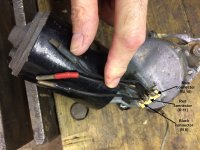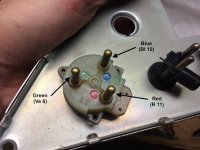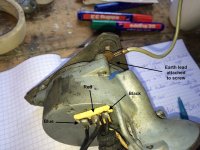The problem with a lacquer is if it is too "hot", you could easily destroy the decal used to mark the speedo. What might be a better option would be have a transfer decal made from the original glass, remembering that you need to make it in reverse! UV protection would also be good.The medium of using pastels in the art world has a disadvantage in that. unlike oils or watercolour it doesn't "dry".
A spray of sealer after the work is finished prevents the pastel from scuffing when handled.
After you left today with the good speedo glass, I've been playing with the idea of spraying the reverse of the glass with a laquer to prevent the deterioration or the the numbers.
A risky business .......... probably ! The spray might discolour or disfigure the numbers even more.
Any thoughts on this ...................... Michael Paas
You might be able to lay a clear mask over the original- the stuff used to make a clear "bra" for exterior paint. That stuff is pretty thick though, so I don't know if there is enough room between the glass and the speedo needle.
Sven, I think I've located a proper VR for your car. I'm going to talk to the owner (he has several, supposedly) and see if I can get him to send me a couple.




